Delage D8-120 Cabriolet Vanvooren 1938
|
This Delage D8-120 with 4.744 cc eight cylinder engine was prepared by Vanvooren at Courbevoie for the Shah Aga Khan III in 1938. The engine produces 115 hp at 4.200 rpm and allow a claimed top speed of 160 kph. Exhibit Les amis de Delage |
 |
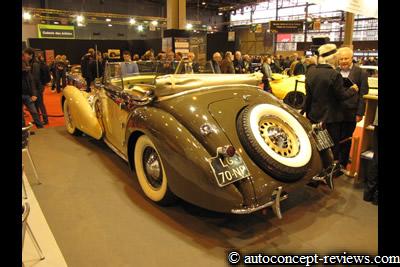 |
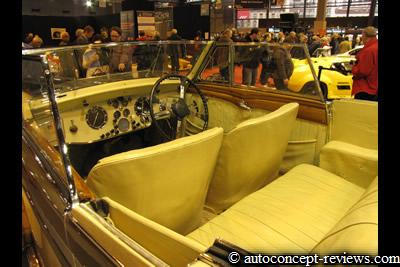 |
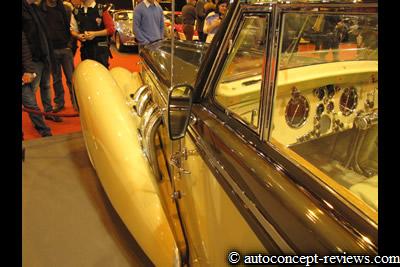 |
| |
Delahaye 135 MS Figoni & Falaschi 1937
|
See Delahaye 135M Roadster Figoni & Falaschi 1937 as well as Delahaye 135 MS Teardrop Coupe Figoni & Falaschi 1938 -Exhibit Auto Classique Touraine |
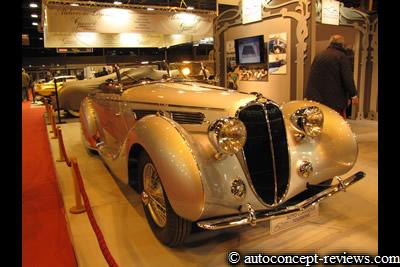 |
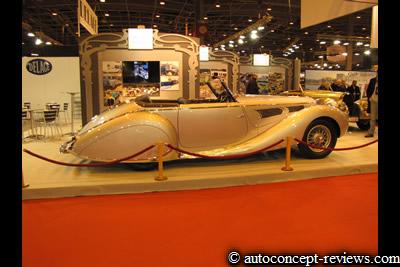 |
| |
Delahaye 135 S Figoni & Falaschi 1936 Chassis Number 46626
|
See Delahaye 135S Pourtout LM 1938 - Exhibit Delahaye |
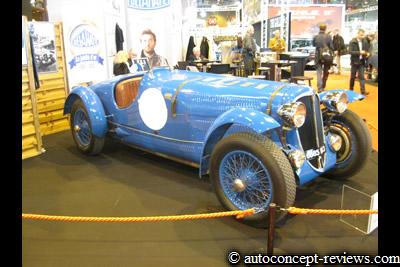 |
 |
| |
Delahaye 235 Motto 1950
|
| This Delahaye 235 received an aluminium body made by Motto and designed by Philippe Charbonneaux. It collected the Design Award at the 1952 Paris Motor Show. - Exhibit Philippe Charbonneaux |
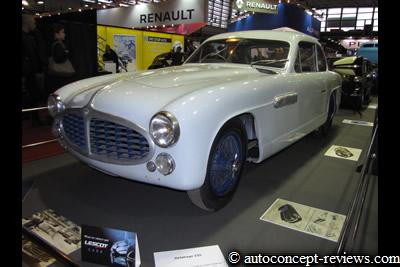 |
| |
Ferrari 166 MM Touring Barchetta 1949
|
The Ferrari 166 MM Barchetta is the car Luigi Chinetti and Lord Selsdom drove to win the 1949 Le Mans 24 Hours. Chinetti drove 22 hours and 48 minutes during these 24 hours since Lord Selsdom was sick. The car has a 1992 cc 140 hp twin overhead camshaft V12. The top speed was claimed at 201 kph.- Exhibit ACO |
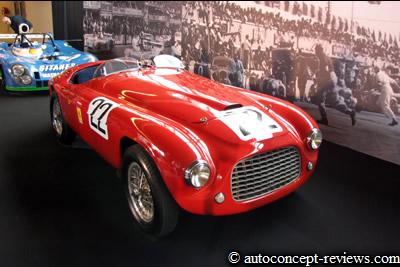 |
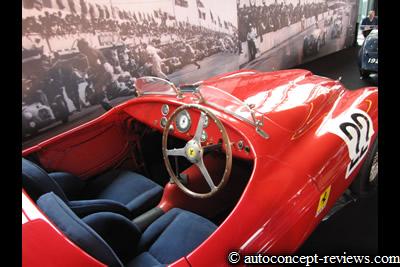 |
| |
Ferrari 166-246 Dino F2 1968
|
This Ferrari 166 Formula Two was driven by Jacky Ickx, Derek Bell and Bambrilla during the 1968 season. It was later adapted for Tasman Formula Libre with a 2.4 Litre 300 hp V6 engine. - Exhibit Fiskens |
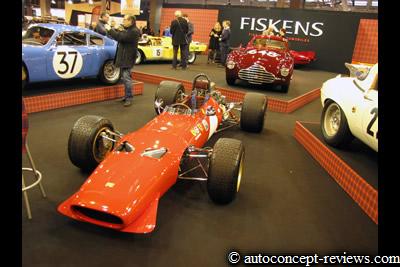 |
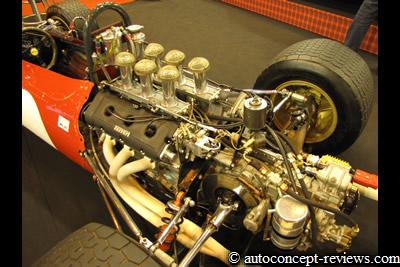 |
| |
Ferrari 212 Inter Export Vignale 1951
|
Ferrari 212 Inter series was built between late 1950 and 1953 and bore a wide variety of body styles. These varied significantly, even within the examples produced by a single coachbuilder, notably those from the Vignale design studio. Chassis N° 0161EL was entered for the 1951 Carrera Panamericana and finished in second position behind a sister car. The race was restricted to four-passenger coupes and sedan. - Exhibit Steve Tillack |
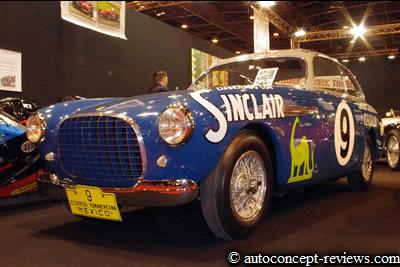 |
 |
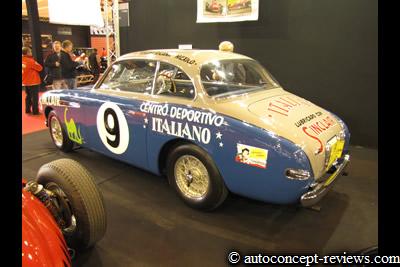
|
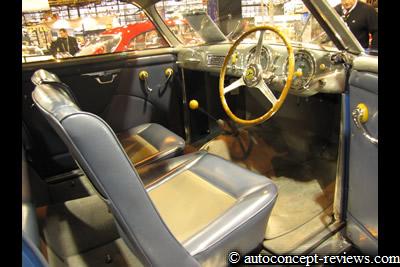 |
| |
Ferrari 246 Dino F1 1960 recreation
|
- Penned by Carlo Chiti and Vittorio Jano, the Ferrari Tipo 246 was a conventional front-engined design Formula 1 single seater. The tubular steel frame is clothed in an alloy skin. The Dino V6 engine was a 65 degree Double overhead camshaft unit of 2417 cc displacement producing about 270 hp. A total of nine 246 Dino F1 were built from 1958 through 1960, but by the end of the 1960 season Ferrari ordered that the early Dinos be disassembled. British vintage racing car Sir Anthony Bamford purchased chassis 003 for a restoration and vintage racing. Exhibit Steve Tillack |
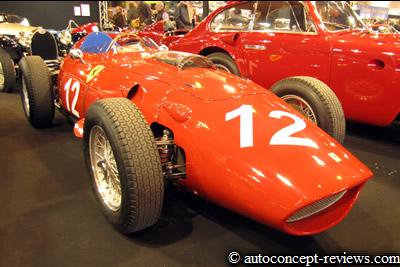 |
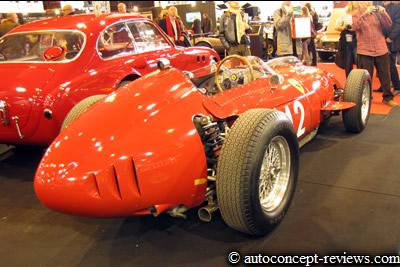 |
 |
| |
Ferrari 250 GT LWB TdF 1959
|
. See Ferrari 250 GT Competizione Tour de France 1956 --Exhibit J.D. Classics |
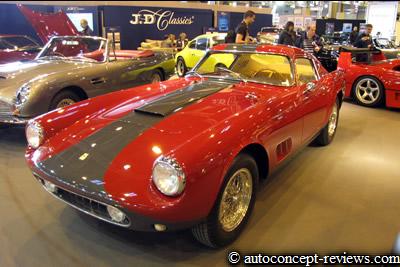 |
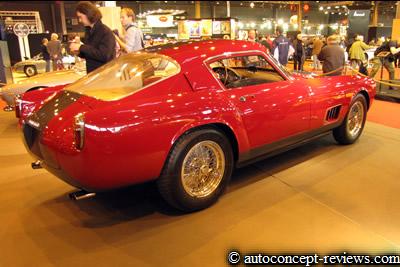 |
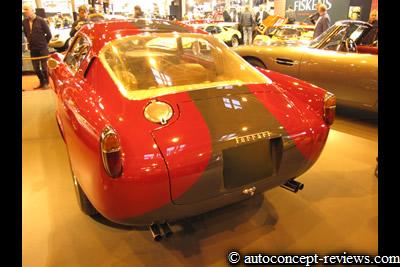 |
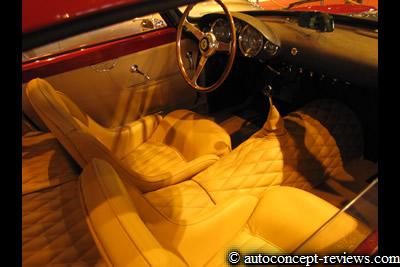 |
| |
Ferrari 250 Sport Berlinetta Vignale 1952
|
|
This Ferrari 250 Sport Berlinetta Chassis N°0156ET gained fame as the outright winner of the 1952 Mille Miglia. This 250 Sport Berlinetta, based on a modified modified Type 212 Export chassis and is very similar in appearance to other Ferrari 225S Berlinettas. Under the bonnet lay the prototype of a new single overhead camshaft V12 of 3 Litre capacity giving 250 cc per cylinder. The designation 250 comes from the single cylinder capacity. See Ferrari 225S Berlinetta Vignale 1952 - Exhibit Steve Tillack |
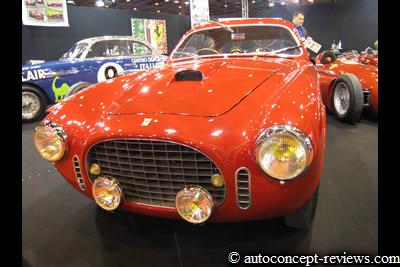 |
 |
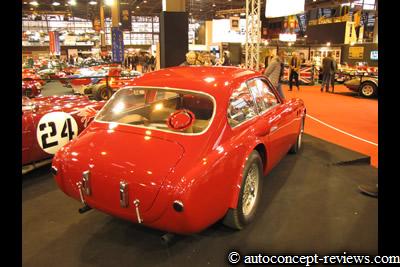
|
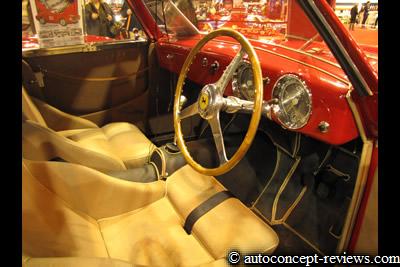 |
| |
Ferrari 288 GTO 1985
|
| When the new FIA Group B Race and Rally regulations were introduced in 1984, Ferrari decided to create a model that would allow returning to the glory days of the 1962-1964 250 GT models. The 400 horsepower, twin turbo 288 GTO of 1985 was the result. It benefited from the intensive race and rally experience the Michelotto Company had gained from their successful and active campaign of the Ferrari 308 models. To fulfill Group B regulations, 200 examples were required to be built, however the popularity of the new model necessitated the construction of another 72 cars. Accordingly, the 288 GTO models found new homes as rapidly as they circled any track. |
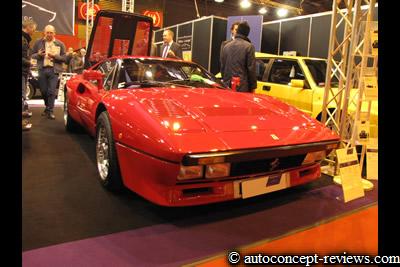 |

|
 |
| |
Ferrari 312 F1 1967
|
| The Ferrari 312 was the designation of the 3 litre V-12 (hence 312) Formula One cars raced by the Italian team from 1966 to 1969. Exhibit Tradex srl |
 |
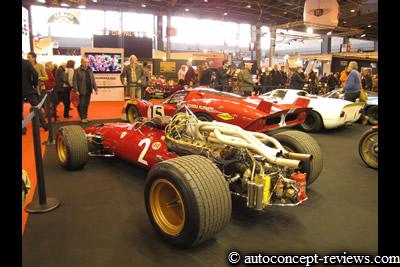 |
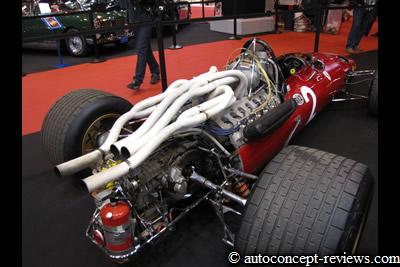 |
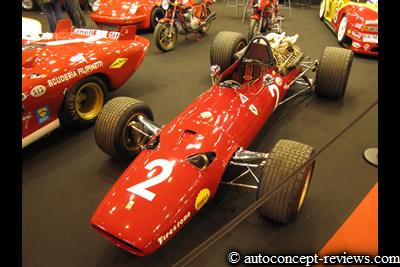 |
| |
Ferrari 312 T Niki Lauda 1975
|
| The Ferrari 312T was a Ferrari Formula One car design used from 1975 until 1980. It was designed by Mauro Forghieri for the 1975 season and was an uncomplicated and clean design. The 312T series won 27 races, four Constructors' and three Drivers' Championships. The car was powered by the powerful and ultra reliable flat-12 engine which gave around 510 bhp. The T in the name stood for 'transverse', as the gearbox was mounted in this way, improving the car's handling characteristics. - Exhibit Tradex srl ( text source : wikipedia ) |
 |
 |
| |
Ferrari 512 BB ex-Ecurie Francorchamp 1978
|
| This car was prepared by Jacques Swaters' Garage Francorchamps that was Belgium's Ferrari Concessionnaire. At the time, from 1974 to 1983, the Ferrari competition department had decided to focus exclusively on Formula One Racing. The Ferrari honour in endurance racing was therefore largely entrusted to privateer teams and their drivers. The Ferrari 512 BB shown here was prepared with a series of important modifications to both its mechanical components and bodywork. - Exhibit Fiskens |
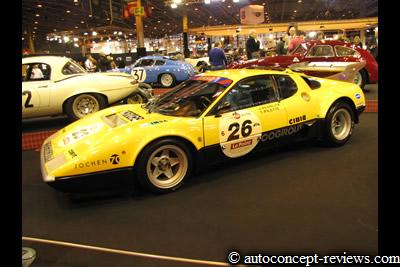 |
 |
| |
Ferrari 512S coda longa 1970
|
With the new rules in place, Enzo Ferrari knew that it would be impossible for a ‘Sports Prototype’ of only three litres to compete against a five litre ‘Sports Car.’ In 1969, with the C.S.I.’s Group 6 rule change, a reduction from a minimum of 50 to 25 production units, and a major infusion of cash from Fiat, Ferrari quickly set about creating the 25 vehicles necessary to meet the Group 6 criteria. The 512 S was first introduced to the public at a press conference in November 1969. The chassis was similar to the one used on the P4 — a semi-monocoque design. The engine was a direct development of the 612 Can Am series unit, now fitted with twin overhead camshafts, four valves per cylinder and Lucas fuel injection. Initially it could produce 550bhp at 8,500rpm. -Exhibit Tradex srl. |
 |
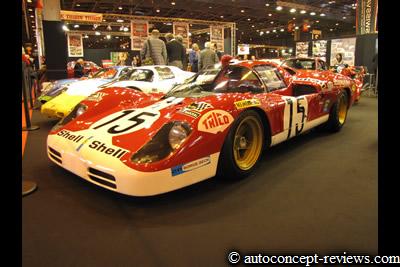 |
 |
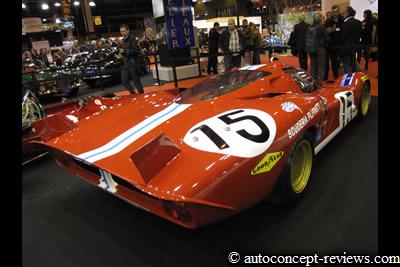 |
| |
Ferrari 512M Escuderia Montjuich 1970
|
- After Le Mans 1970 event where a Porsche 917 won, the Mauro Forghieri-led development team started to work on a slimmed down and more powerful version of the Ferrari 512S. Called the 512M (for modificato), the revised car produced 620bhp at 9,000rpm and weighed 815kg compared to the 512S spyder’s 856kg. Bodywork revisions included a more aerodynamic nose, and a large airbox was mounted on top of the engine to force air into the intake trumpets. Further modifications included new rear bodywork and no spyder version was made available. 15 of the 25 512Ss produced were converted to M-specifications.-See Ferrari 512 S/M 1002 Montjuich 1970 - Exhibit Fiskens |
 |
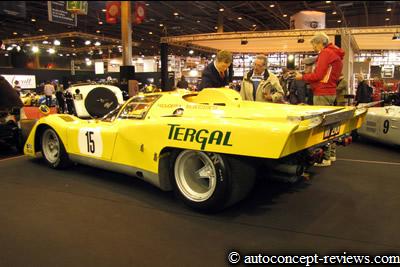 |
| |
Ferrari F40 LM
|
The Ferrari F40 LM is one of nineteen factory-modified for competition by Michelotto, fitted with an up-rated gearbox, brakes and an engine producing between 850 and 900 hp. - Exhibit J.D. Classics |
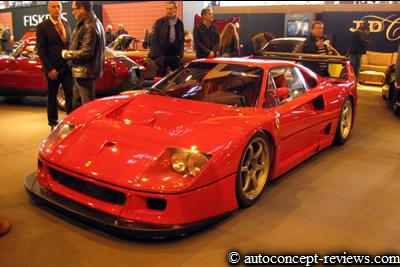 |
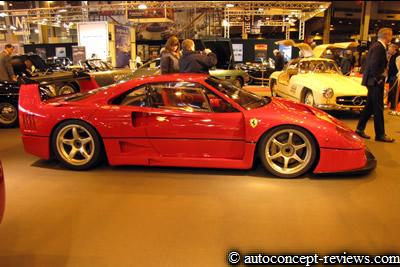 |
| |
Ford P68 1968
|
| At the end of the 1967 season the FIA redrew the rules for sports car racing. Ford's American headquarters organisation withdrew from sports car racing at the end of 1967. The British organisation Alan Mann Racing decided to build a brand new prototype car around Ford's recently introduced 3.0L DFV V8 Formula One engine. The Ford P68 was entered in several endurance events in 1968 but did not collect great success.- Exhibit by Ascott ( text source : wikipedia ) |
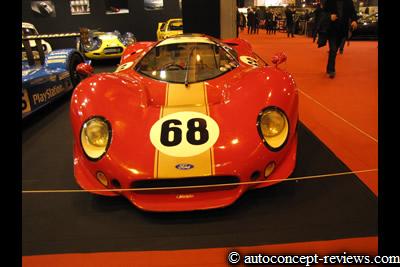 |
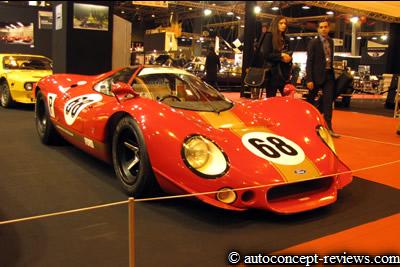 |
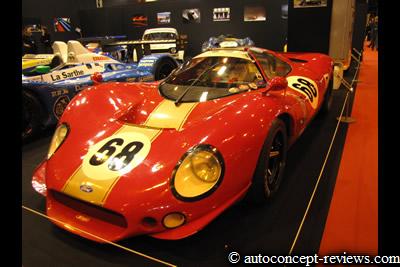 |
 |
| |
Frazer Nash Le Mans Coupe 1955
|
Nine Fraze Nash Le Mans fixed-head coupes were built between 1953 and 1956. The engine is a 1.971 cc six cylinders Bristol mounted in a parallel-tube chassis frame. This particular Frazer Nash Le Mans Coupe was entered at the 1959 edition of the French endurance race; after three hours racing the car finished in a sandbank.- Exhibit une femme une collection |
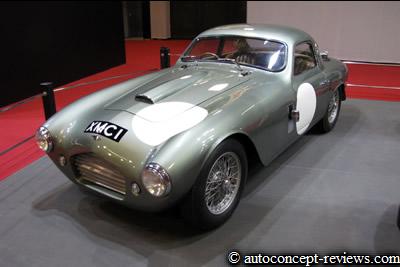 |
 |
| |
Honda NSX 1991
|
The Honda NSX was presented at the 1989 Chicago Auto Show and was built in a purpose-made factory in Japan, for sale from 1990. The Honda NSX bcame the world's first mass-produced car to feature an all-aluminium body. It was powered by an all-aluminium 3.0 L eV6 engine, which featured Honda's VTEC (Variable Valve Timing and Lift Electronic Control) system developed in the 1980s, a 5-speed manual or 4-speed Sports Shift automatic transmissions. -exhibit Honda ( text source : wikipedia ) |
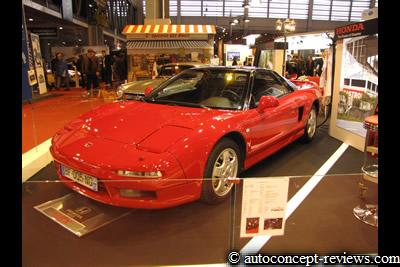 |
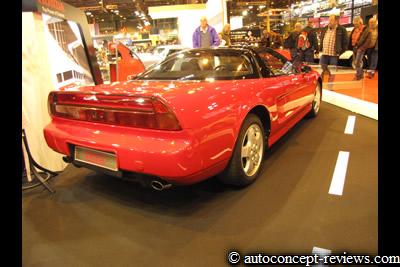 |
| |
Honda S800 Coupe 1966
|
| Introduced at the 1965 Tokyo Motor Show, the Honda S800 would replace the successful Honda S600 as the company's image car. Like the S600, it was available as either a coupe or roadster and continued the advanced technology of its predecessors. The 791 cc straight-4 engine produced 70 hp (52 kW) at 8000 rpm, thus making this Honda's first 100 mph (160 km/h) automobile, but still allowing for 35 mpg (6.7 L/100 km). 13.034 examples were produced from 1966 to 1970 - Exhibit Honda ( text source : wikipedia ) |
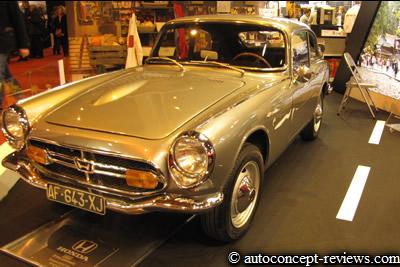 |
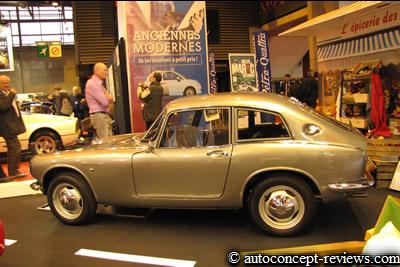 |
| |
ISO Grifo 7 Litre 'Sunroof Coupe' 1970
|
Only 17 ISO Grifo 7 Litre with removable sunroof were produced between 1966 and 1970. This version of the ISO Grifo is equipped with a 390 hp Chevrolet 427 V8 and five speed ZF gearbox. - Exhibit Thiesen |
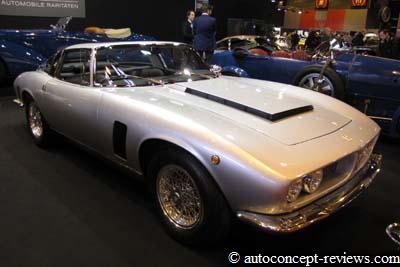 |
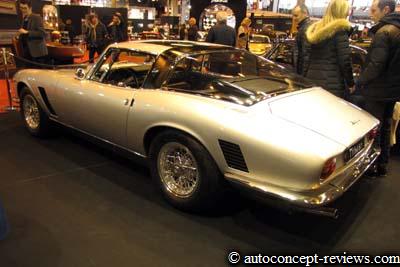 |
| |
Jaguar D Type XKD524 1956
|
This Jaguar is considered to be the most original lowest mileage D Type in existence today .Lukas Huni |
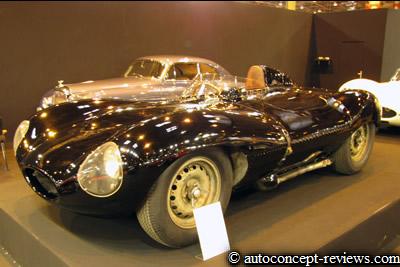 |
 |
| |
Jaguar E Type lightweight prototype 1961
|
See Jaguar E Type Hard Top Lightweight '86 PJ' 1963 as well as Jaguar Lightweight E Type Reconstruction 2014. - Exhibit Fiskens |
 |
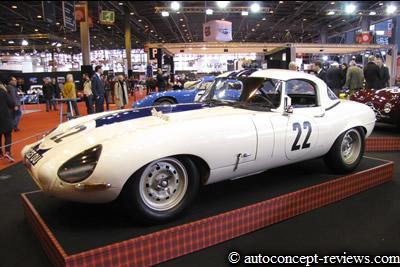 |
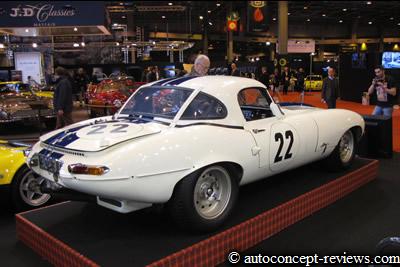 |
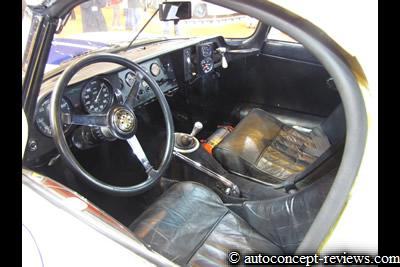 |
| |
Jaguar XJR9 Le Mans 1988 winner Chassis Number XJR9 LM 488
|
| - In 1988 Jaguar won the World'Manufacturer Championship with six victories over ten events including Le Mans 24 Hours. See Jaguar XJR-6 to XJR-12 1985 1990.- Exhibit Jaguar Land Rover |
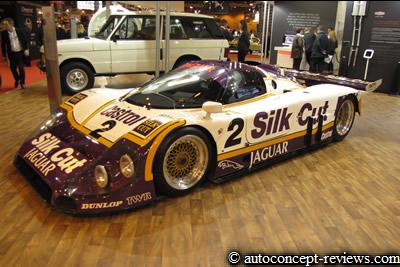 |
 |
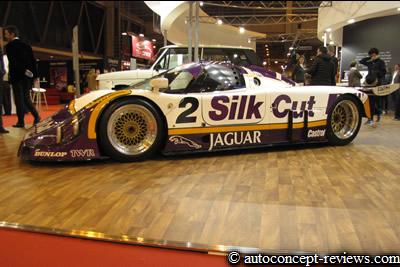 |
 |
| |
Jaguar XKSS Roadster 1957
|
The Jaguar XKSS is a road version of the very successful Jaguar D Type. This make it a 170 mph D Type race car for use on the road. Keeping the unique monocoque design of the D Type, it got a full width windscreen, light bumpers, a more luxurious interior and a luggage rack. Only 16 XKSS were produced. See Jaguar XKSS 1957 - Exhibit Lukas Hüni |
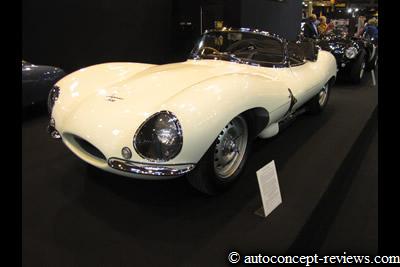 |
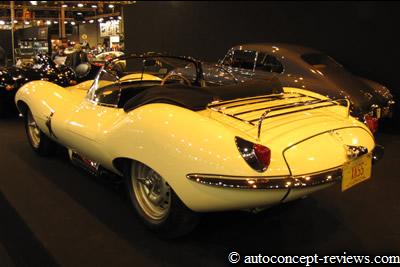
|
| |
Lancia D50 Grand Prix 1955
|
| This exceptional single seat formula racing car was developed by Vittorio Jano for the 1955 season. The D50 utilized a new lightweight space frame with small diameter tubing. The independant front suspension was attached directly to the front of the engine block, turning it into a load-bearing unit. The 2.487 cc double overhead camshaft V8 engine produced 260 hp. See Lancia D50 Formula 1 1954-1955 - Exhibit Tillack |
 |
 |
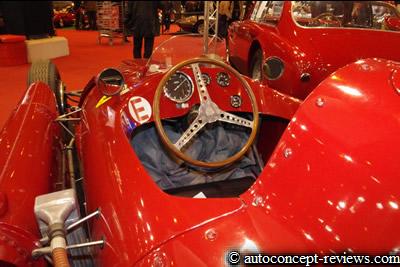 |
| |
Lancia Lambda Serie 1 1923
|
See Lancia Lambda 1922 1931.- Exhibit Cristoph Grohe |
 |
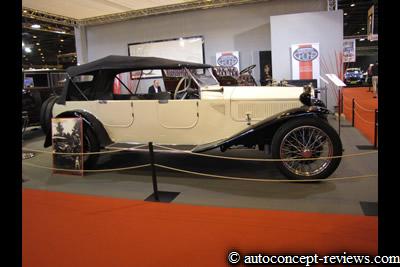 |
| |
Lola T70 Chevrolet 5.7 Litre 1967
|
The Lola T70 was built for sports car racing, popular in the mid to late 1960s. Developed by Lola Cars in 1965 in Great Britain. The Lola T70's big endurance win came in the 1969 24 Hours of Daytona where they finished first and second. The winning car was the Sunoco Lola T70-Chevrolet driven by Mark Donohue and Chuck Parsons. - Exhibit Histoire d'Auto ( text source : wikipedia ) - related article : Lola Aston Martin T70 1967 |
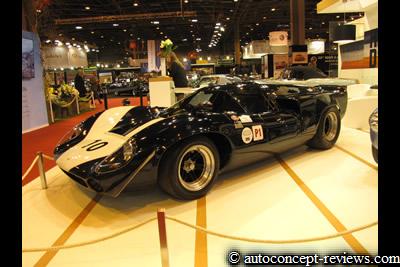 |
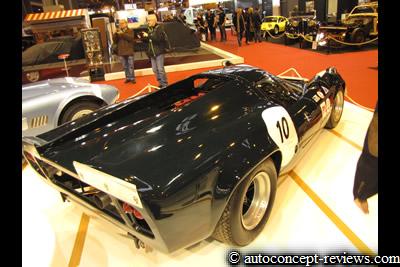 |
| |
Lotus Mk VIII 1955
|
The Lotus Mark VIII had a low, wide, all-enveloping body on a complex space frame. Maintenance had to be carried out through small gaps in the frame. Engines were either 1.497 cc M.G. or 1.098 cc Coventry Climax. Only nine examples were built and six remaining.- Exhibit Movendi |
 |
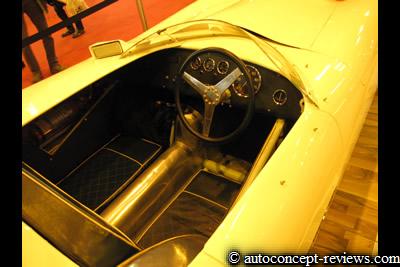 |
| |
Maserati 6 CM 1500 Grand Prix 1937
|
The Maserati 6 CM was presented to the public at the 1936 Milano Motor Show and in the same year at the race in Monte Carlo. It is a single seat racing car with alloy body and supercharged 1493 cc six cylinder engine producing 155 hp. Exhibit Thiesen |
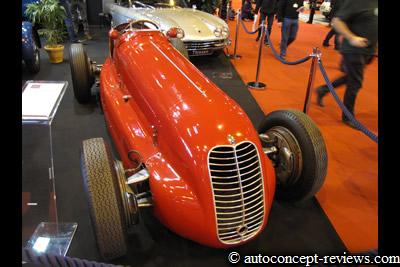 |
 |
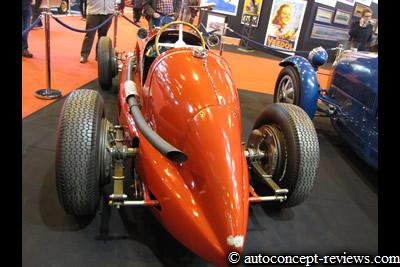 |
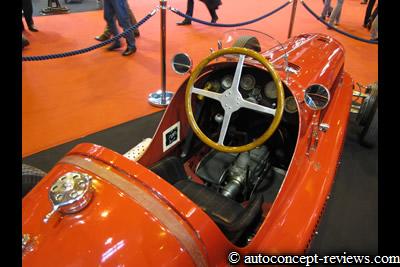
|
| |
Maserati 300S 1956
|
See Maserati 300S Shortnose - 1955 1957 including chassis 3058 from Parravano. - Exhibit Maserati France |
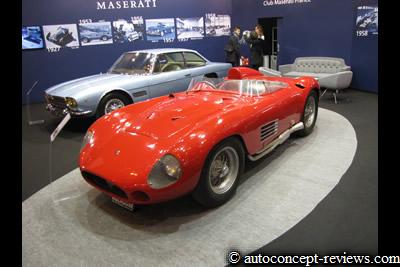 |
 |
| |
Maserati A6 Panoramica Prototype Zagato 1949
|
Exhibit Tradex srl. |
 |
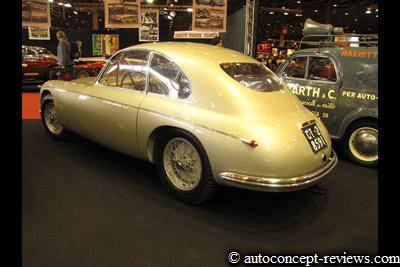 |
| |
Maserari A6G Gran Sport 2000 Coupé Frua 1952
|
Restauration by Touring Superleggera in Milan, Italy. This car was first shown at the 1952 Turin Motor Show. - Exhinit Touring |
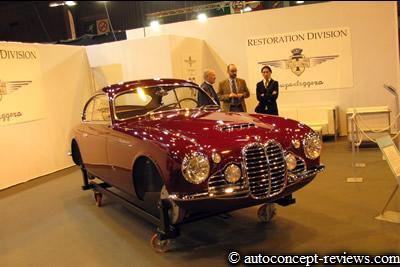 |
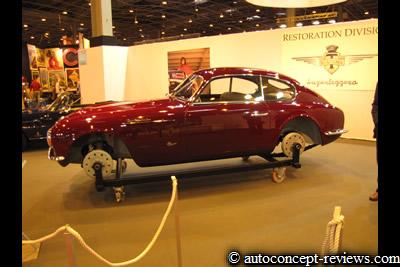 |
 |
| |
Maserati A6G54 Zagato 1954
|
 |
Maserati A6G 2000 by Zagato 1954 1955. -Tradex srl.
Between 1954 and 1955 , 20 Maserati A6G 2000 Zagato were produced. It is propulsed by a 6 cylindre 1985 cc. Body is made of aluminium....
...See Maserati A6G 2000 by Zagato - 1954 - 1955 |
| |
Maserati A6GCM Formula One 2000 cc 1951
|
See Maserati A6GCM Formula racing car 1951. -Exhibit une femme une collection |
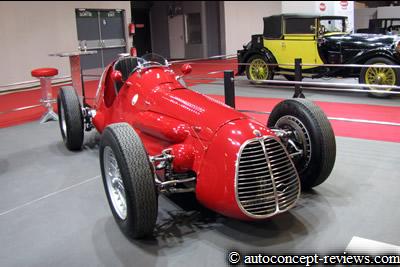 |
 |
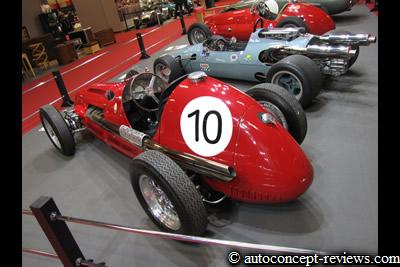 |
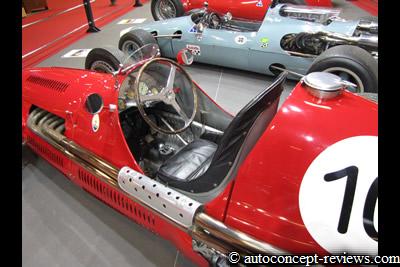 |
| |
Mercedes 300 SL Alloy Gullwing 1955
|
See Mercedes 300 SL Gullwing Coupe 1955. - Exhibit by J.D. Classics |
 |
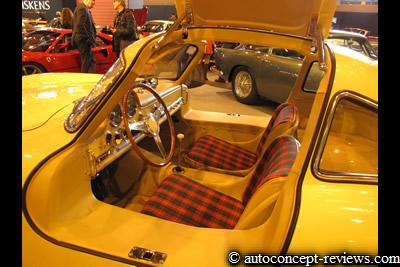 |
| |
Panhard Levassor 20 CV Sport 1930
|
The Panhard Levassor 20 CV Sport was a premium automobile at the time comparable with a Bugatti Type 46 or an Hispano Suiza H6B. The engine was a 5.350 cc four cylinders without valves. The weight is 2150 kg. The claimed top speed is 150 kph. -Exhibit Christoph Grohe |
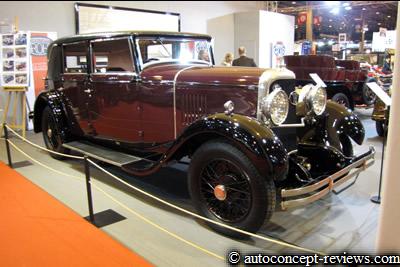 |
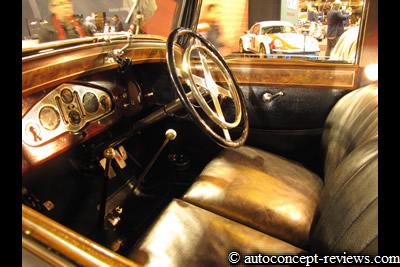 |
| |
Pegaso Z-102 Berlinetta with Enasa body 1955
|
- Most Pegaso Z102 received a body by Touring Superleggera but a few, like this example, were finished entirely by Enasa in Spain. See Pegaso Z102B Touring Berlinetta and Spyder 1951 1956. - Exhibit by pueche |
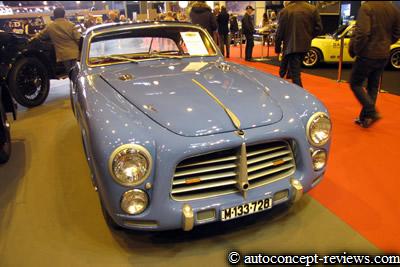 |
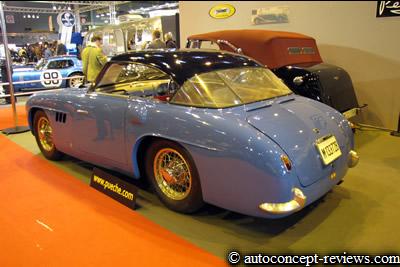 |
| |
Peugeot 301C Roadster 1932
|
The Peugeot 301C was launched in 1932 using several mechanical elements of the Peugeot 201 like the independant front suspension. The chassis utilizes the new 'Bloctube' technique for more rigidity. The 1.465 cc side valves four cylinder engine produces 34 hp and allow a claimed top speed of 90 kph with a three speed gearbox. 20.729 Peugeot 301C were produced between 1932 and 1933 including all body styles. - exhibit by Peugeot |
 |
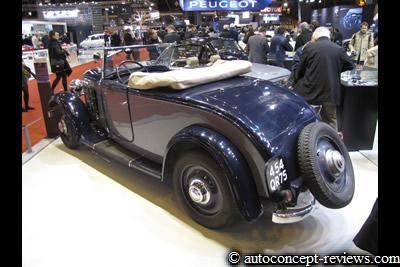 |
| |
Peugeot 402 Roadster Darl'Mat 1938 |
Emile Darl'mat prepared a sport car that could go racing using the chassis of the Peugeot 302 equiped with mechanical elements of the Peugeot 402. The engine was upgraded from 55 hp to 70 hp. The car was prepared by Marcel Pourtout under the design of George Paulin. 104 examples were produced between 1937 and 1939. Three roadsters were entered at 1937 Le Mans 24 Hours and finished in 7th, 8th and 10th positions. - Exhibit Peugeot - Related article : Peugeot 402 Darl’Mat Roadster 1940 |
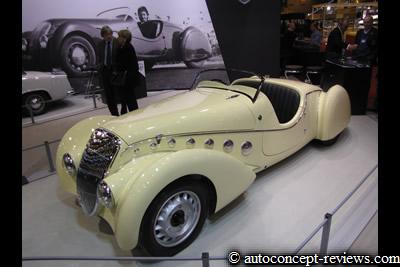 |
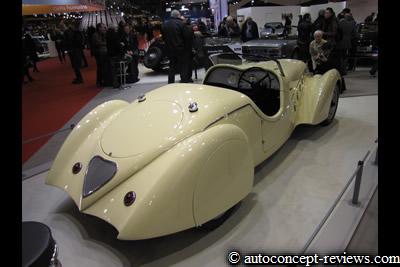 |
| |
Pinin Farina Ferrari Dino Prototype 206 GT 1965
|
| In memory of Enzo's son, Pinin Farina created this beautiful Dino (for Alfredino), on a 206 S Prototype base. This car is unique. The line of the lights and the rear quarter window are master pieces. This car was the star of the 1965 Paris Motor Show. It announced the Dino 246, with few thousand copies sold and that we could see on the main circuits of the world. The engine is 1.987 cc four overhead camshafts V6 producing 180 hp. The claimed top speed is 230 kph. -Exhibit ACO |
 |
 |
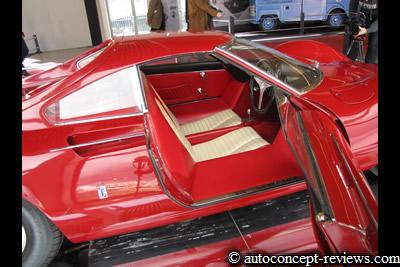 |
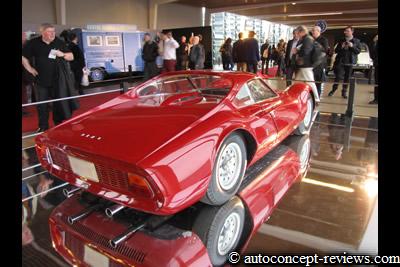 |
| |
Glöckner Porsche 1954 |
This car was specially developed for the 1954 Mille Miglia. - Exhibit Movendi |
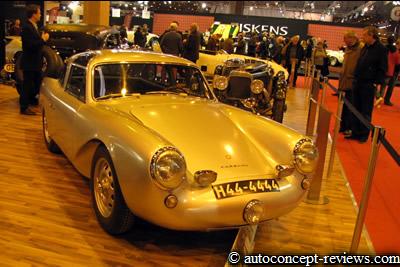 |
 |
| |
Porsche 356B S90 1963
|
The Porsche 356B was the third generation of the famous 356 and was produced between 1960 and 1963. The Super 90 with twin grilles on the engine was one of the most powerful road version of the 1600 flat four engine. - Exhibit Porsche |
 |
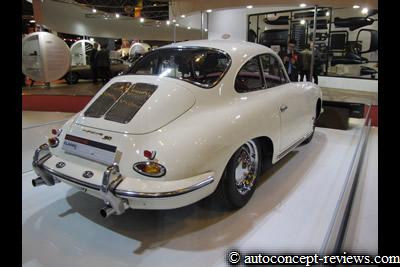 |
| |
Porsche 356B 1600GS Carrera Abarth GTL 1960 |
When Porsche considered that the 356 Carrera 1600 GS had reached its limits, they commissioned Carlo Abarth to prepare twenty improved cars using the same mechanic. The first specimen of this particularly streamlined and lightweight 356 won its category in the 1960 24 Hours of Le Mans. - Exhibit Fiskens |
 |
 |
| |
Porsche 718W-RS Spyder 1961 Chassis Number 718 047 |
This car built in 1961 started its racing career with the famous four cylinder engine before adopting a flat eight in 1962. The 240 hp flat eight engine is derived from the Formula One engine. This car was entered in a wide variety of races in Europe and the USA and allowed Edgar Barth the win the 1964 European Hillclimb Championship. The weight is only 684 kg. The claimed top speed is 260 kph. - Exhibit Porsche |
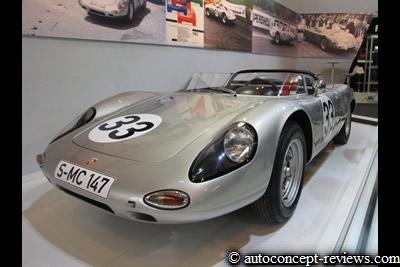 |
 |
 |
| |
Porsche 907 1968
|
The Porsche 907 was a sportscar racing prototype built in 1967 and 1968. It was introduced at 1967 Le Mans 24 Hours with longtail body. The best Porsche 907 finished in 5th position. The 1968 Daytona 24 Hours saw a 1-2-3 finish in longtail versions while the 1968 Sebring 12 Hours had a 1-2 finish for the Porsche 907 this time in short tail version.- Exhibit Tradex srl. |
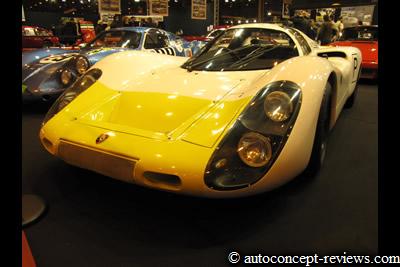 |
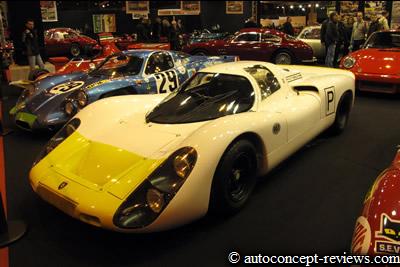 |
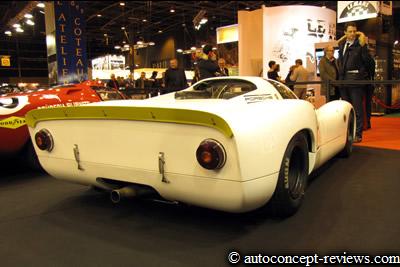 |
 |
| |
Porsche 911 GT1 Le Mans 1998 winner |
in the mid-1990s, GT cars began to play an increasing important role in the motor racing sport. Porsche responded by applying an advanced, hi-tech racing concept to the design of the 911 GT1, which made its racing debut at the 64th Grand Prix of Endurance in Le Mans in 1996. The new dimension in sports car construction consisted in the first 'Eleven' being fitted with a mid-engine, for the six cylinder power unit was, for the very first time, moved to the middle, which provided balanced axle load distribution and also offered aerodynamic advantages. Another innovation was the switch from an air to a water cooling system, which reduced both thermal load and fuel consumption. two overhead camshafts per cylinder bank and four valves per cylinder were a standard feature of this high performance engine....
... See Porsche GT1 Racing Coupe 1996-1998 - Exhibit Porsche |
 |
 |
| |
Porsche 911 GT3 RSR 2013
|
The Porsche 911 RSR has been back at 1993 Le Mans 24 Hours when GTs were again authorized. Designed in 2001, the IMSA Performance Matmut team has become a reference of international GTs. In 14 years the team based in Rouen, France, has got a record of achievements with several category wins at Le Mans 24 Hours, at Petit Le Mans in Atlanta, USA. The victorious car of the LM GTE Am category at the 2013 Le Mans event was offered to the ACO by its partner Matmut in 2015. The engine is a 470 hp six cylinder. Exhibit ACO |
 |
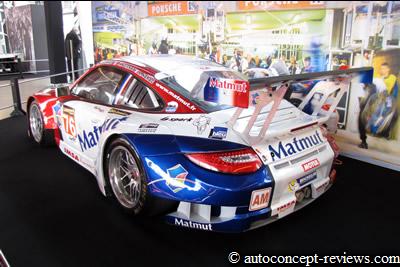 |
| |
Porsche 934 RSR Turbo 1976 Chassis Number 0153
|
Porsche introduced the 934 RSR Turbo in 1976 for competition in the Group 4 GT class. Only 31 examples were built.- Exhibit Fiskens |
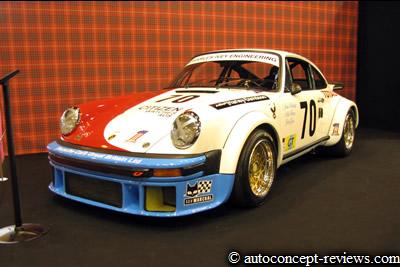 |
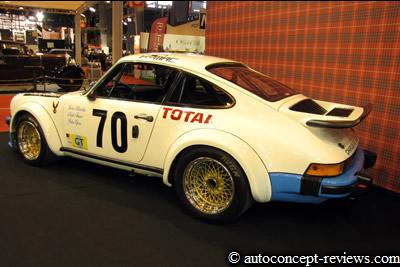 |
| |
Porsche 962C 1990 Chassis Number RLR 202
|
| The 962 was the development of the original Porsche Group C car, the 956. This model won five world championship and six Le Mans 24 Hours races. see Porsche 962C 1984 -1994 - Exhibit Fiskens |
 |
 |
| |
Renault 4 CV 1063 Le Mans 1951 |
The Renault 4 CV was introduced in 1946 with 30 hp 750 cc engine. The car was soon entered in competition with some success due to agility and reliability. The Type 1063 was developed for competition with 43 hp 748 cc four cylinder engine. The 1063 was entered in several races like Mont Ventoux, Monte Carlo, Liege-Rome-Liege, Tour de France or Mille Miglia. In 1951 it was entered at the Le Mans 24 Hours and won the 750 cc class. - Exhibit Renault |
 |
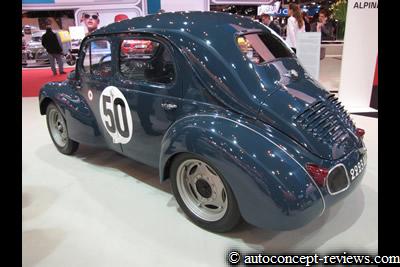 |
| |
Renault 40 Cv Record 1926
|
Renault launched the 40 CV NM in 1919 as the top end of its product line. The Renault 40 CV NM is a luxury car with 6 cylinder in line engine 9.121 cc, producing 130 hp at 1800 rpm. The fully equipped chassis weight 1750 kg. A typical customer will purchase a fully equipped chassis and contract a coachbuilder to prepare the body according to his/her wishes.
see Renault 40 CV NM Record 1926. - Exhibit Renault |
 |
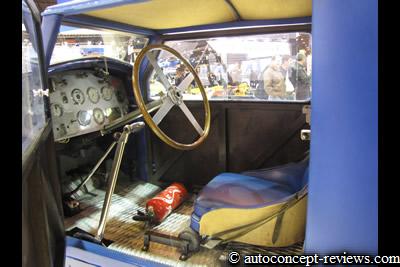 |
| |
Renault Alpine A442 V6 Le Mans 1978 winner
|
The 46th Le Mans 24 Hours saw the black and yellow team to victory, when the Alpine Renault-Elf #2 won one of the world's most prestigious events. Driven by Jean-Pierre Jaussaud - Didier Pironi, the car clocked up more than 5,000 km at over 210 km/h on average...
... see Renault Alpine A442 V6 Gordini Victory in Le Mans 24 Hours 1978. - Exhibit Renault |
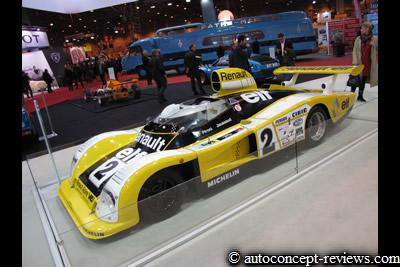 |
| |
Renault Dauphine Monte Carlo 1958 replica
|
| The Renault Dauphine was produced in France between 1956 and 1967 and in Argentina between 1960 and 1970. A total of 2 150 738 examples were produced. The Renault Dauphine was entered in several competition in particular in the 1958 Monte Carlo Rally where it finished first overall. - Exhibit Renault |
 |
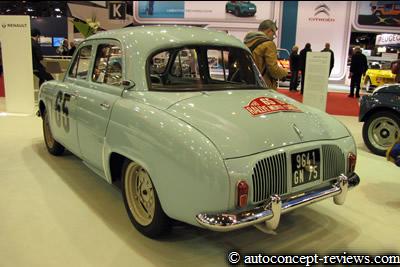 |
| |
Renault Etoile Filante 1956
|
After World War 2, as the aeronautical industry boomed, it was only natural to attempt to carry aviation technology over to the automobile, a trend epitomized by the Renault Etoile Filante.
After 1945, turbine specialist Turbomeca sought to draw public attention to the use of gas turbines. Won over by the idea, Renault accordingly launched the development of an experimental car powered by a 270 hp powerplant - the tubular-framed, stratified polyester bodied Etoile Filante...
... see Renault Etoile Filante 1956 - Exhibit Renault |
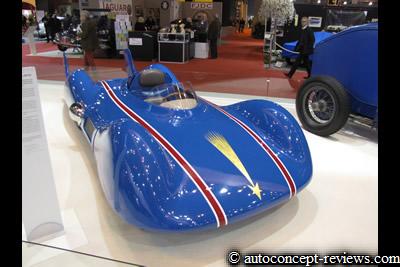 |
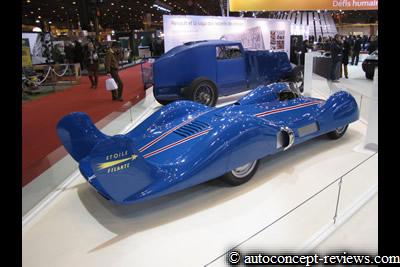 |
| |
Renault F1 R26 2006
|
The Renault R26 was entered in the 2006 Formula One season with Fernando Alonso and Giancarlo Fisichela at the wheel. Alonso obtained six victories and three second position while Fisichela obtained one victory and one third position. The engine is a 2400 cc V8 producing 800 hp. The weight is 610 kg. - Exhibit Renault |
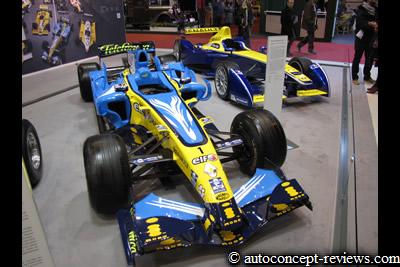 |
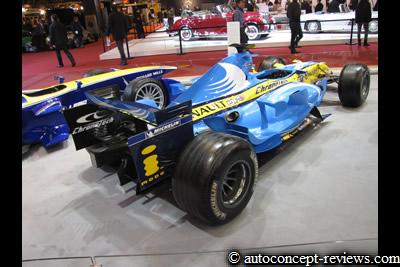 |
| |
Renault F1 RE40 1983
|
The Renault Formula One engine with turbocharger was first introduced in 1977. The Renault RE40 appeared in 1983 with a composite structure. Alain Prost gained four victories and three podiums with this car.and nearly won the Championship. The engine is turbocharged 1.492 cc V6 producing 750 hp. Overal weight is 595 kg. - Exhibit Renault |
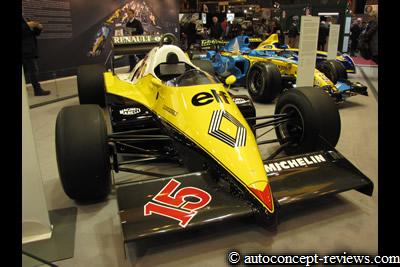 |
 |
| |
Renault Nervasport 1932 Monte Carlo 1933-1935
|
| The eight cylinder Renault Nerva line of model was introduced in 1930. A lighter Nervasport version was launched in 1932 with short wheelbase was entered in several endurance events. In 1935, Renault entered two Nervasport at the Monte Carlo Rally. One Nervasport finished first overall. The Renault Nervasport also won 1935 Liege-Rome-Liege Rally. The 5.448 cc eight cylinder in line engine produced 110 hp. Overall weight is 1.660 kg. Claimed top speed is 145 kph -Exhibit Renault |
 |
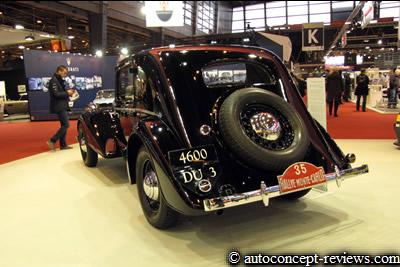 |
| |
Simca 9 Coupé de Ville 1955
|
The Simca 9 Coupé de Ville was designed by Jean Daninos and was produced by Facel Metallon Coachbuilder. It receives the mechanical components of the Simca 9 Aronde sedan. The 1.221 cc overhead valves four cylinders produces 51 hp and allow a claimed top speed of 131 kph with a four speed gearbox. The coupe is equiped with unibody structure the front part of which is made of aluminium while the other elements are made of steel. 2.263 examples were built between 1955 and 1956. - Exhibit Peugeot PSA |
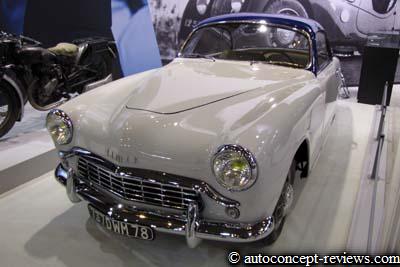 |
 |
| |
Wolseley Doctor's Coupe 1100 cc 1922 Chassis Number 32413
|
Wolseley is one of the oldest English motor-car manufacturers. During the first World War, Wolseley produced Hispano Suiza aero engines under license. This allowed post-war production of overhead camshaft for the four cylinder engines 10 hp and 15 hp added to the range in 1920. This 10 hp Wolseley is a de luxe version Coupe and was sold at a 2012 Bonhams auction sale for £ 7,820 (9,908 Euros) .- Exhibit une femme une collection. |
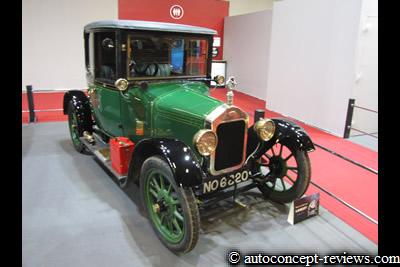 |
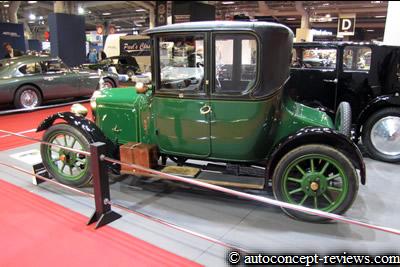 |
| |
|
Paris – Over two days, Friday 5 and Saturday 6 February 2016, visitors to the Retromobile Salon experienced the full excitement of Artcurial Motorcars Retromobile 2016 sale. The auction, presented with brio by Hervé Poulain, Matthieu Lamoure and Pierre Novikoff, realised 56 137 898 € / 43 192 611 £ / 62 646 564 $, with 80 % of lots sold. This is an increase of 21% on last year’s record sale that starred the memorable Baillon Collection, and thus Artcurial is once again responsible for the largest ever sale of collectors’ cars in continental Europe.
With 17 nationalities represented, close to 375 people registered to bid in the room, with another 150 telephone bidders, and the sale was watched by more than 12 000 on the internet. Over 3 000 people packed into the saleroom on the first day to watch the spectacular show orchestrated by Artcurial Motorcars.
International collectors were responsible for over 78 % of the sale total. Indeed it was an international collector who, just after 18h50, following a tense bidding battle lasting eleven minutes, succeeded in winning the unique 1957 Ferrari 335 S Scaglietti, from the Pierre Bardinon Collection, for 32 075 200 € / 24 693 782 £ / 35 711 359$, including premium. This exceptional motor car became the most expensive car ever to sell at auction (in euros and sterling).
We illustrate here the best selling Ferrari as well as a few other classic automobiles some of which are quite exotic |
| |
1957 Ferrari 335S Sport Scaglietti - 32 075 200 Euros |
 |
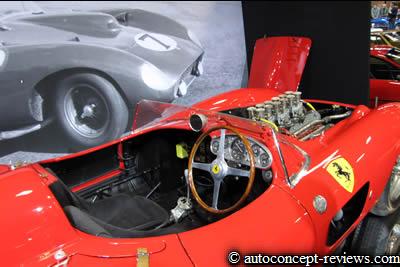 |
| |
1999 Bugatti EB112 Berline - 2 216 800 Euros |
|
 |
| |
1986 Ferrari Testarossa Spider - 1 210 100 Euros
|
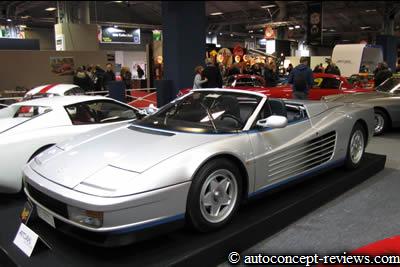 |
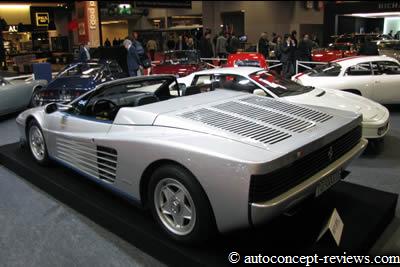 |
| |
1972 Ferrari 365 GTB/4 Daytona - 953 600 Euros |
|
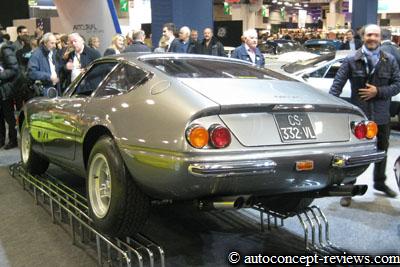 |
| |
1995 Bugatti EB 110 SS Le Mans - 941 700 Euros |
1995 Bugatti EB110 Super Sport - 929 800 Euros
|
 |
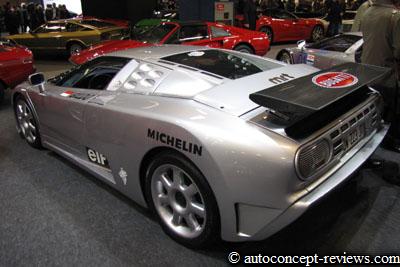 |
| |
1931/2012 Bucciali - Cord Type L29 Modified -
596 000 Euros |
1958 Ferrari 250 GT Coupé Pinin Farina -
524 480 Euros |
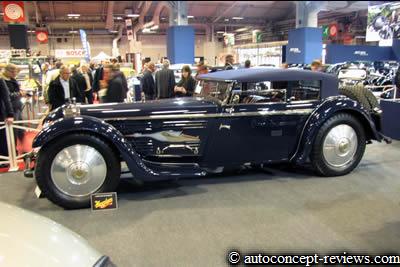 |
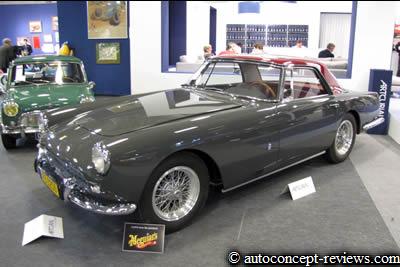 |
| |
1956 Talbot Lago Sport 2500 - 381 440 Euros |
1920 Bugatti Type 13 - 357 600 Euros |
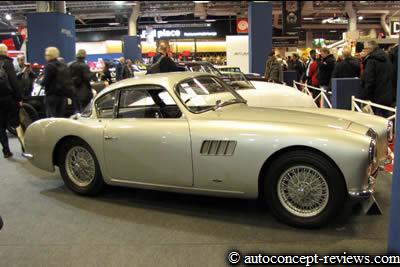 |
 |
| |
1971 De Tomaso Mangusta - 327 800 Euros |
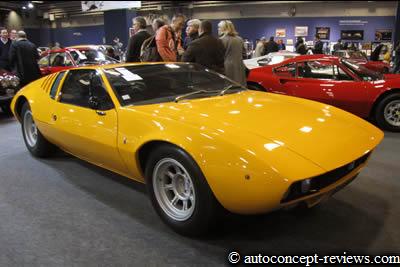 |
 |
| |
1952 Delahaye 235 Coupé Chapron - 298 000 Euros |
1957 Aston Martin DB2/4 Mk III Coupé - 274 160 Euros |
 |
 |
| |
1961 Citroen 2 CV Sahara - 172 800 Euros |
 |
 |
| |
1949 Delahaye 135 MS Coupé Ghia Turin - 160 920 Euros |
 |
 |
| |
1953 Renault Fregate Online Cabriolet Ghia - 77 480 Euros |
 |
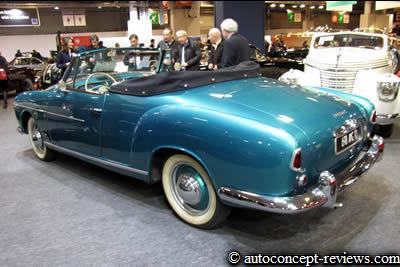 |
| |
1926 Citroen 5 HP C3 Torpedo Trefle - 17 880 Euros |
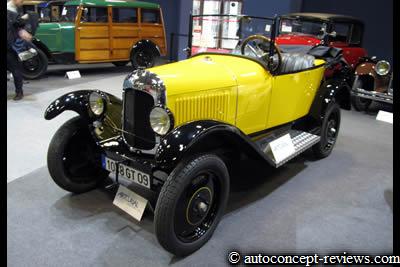 |
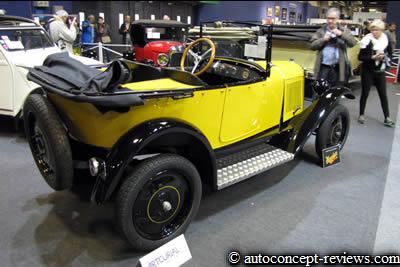 |
| |
|
Texts and pictures by Paul Damiens and Kenn Damiens |








